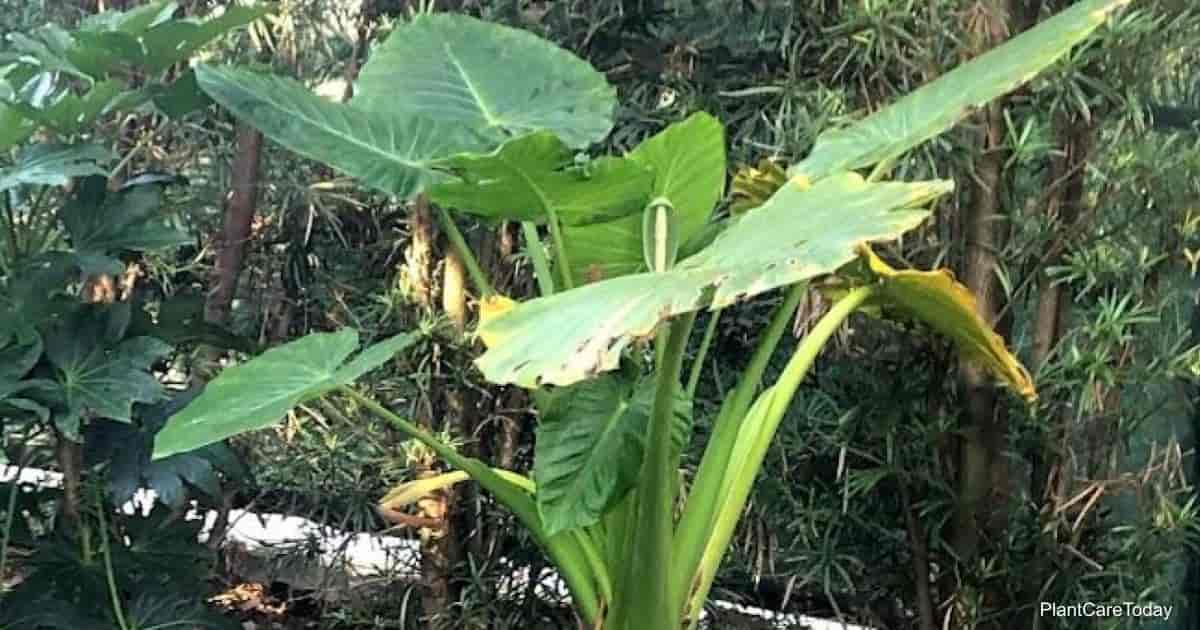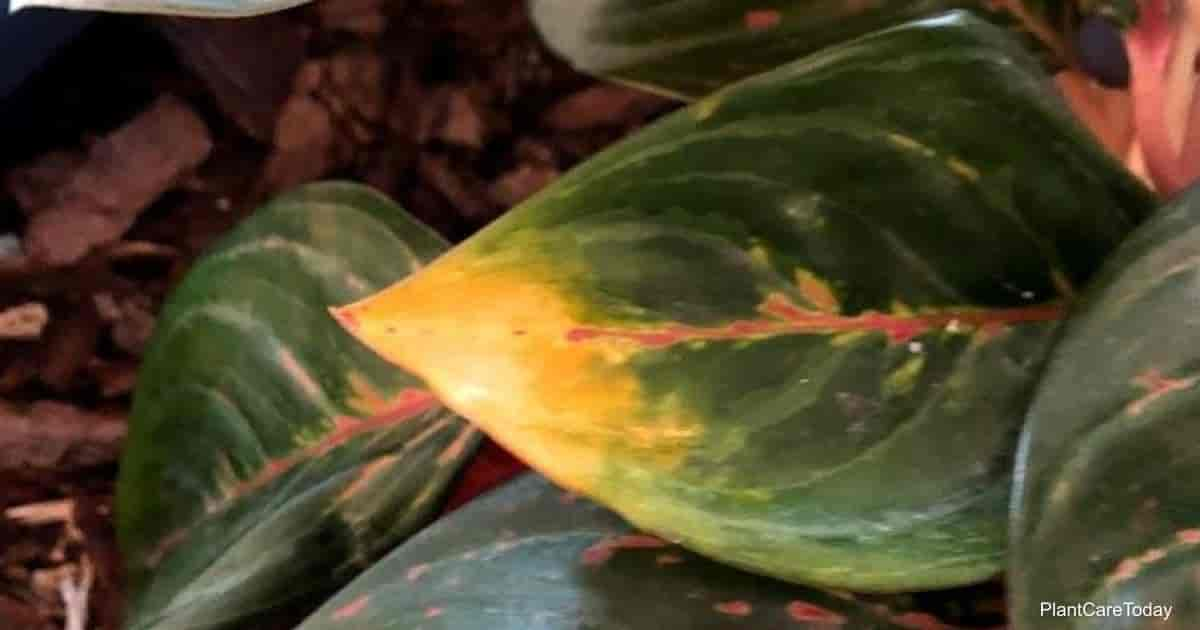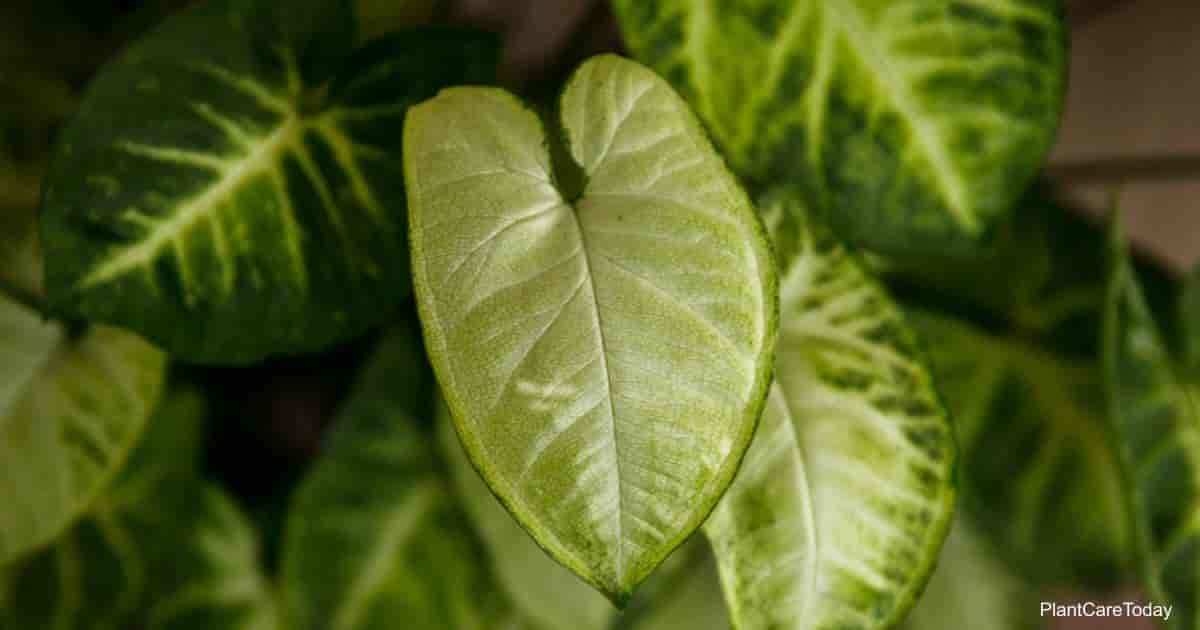There are many things to love about the Philippines: the food, the people, the culture, and the plants.
Many of the Alocasia varieties we know and love come from the Philippines. One native plant known as Alocasia macrorrhiza (a-loh-KAY-see-uh mak-roh-RY-za) is better known as giant taro and has spread its domain to the Pacific Islands down into Queensland.
PinFlowering Alocasia macrorrhiza growing at
Disney World, Hollywood Studios, Orlando Florida
Best known as giant taro, this plant is a major food staple and source of starch across the islands, where such names know it as:
- ʻApe
- Biga
- Cunjevoi
- Pia
But here in the West, this member of the Araceae family is often called giant alocasia or giant elephant ears.
Macrorrhiza is grown as an annual in cooler climates. This hardy perennial is a joy to grow and has leaves that dwarf other popular foliage plants such as pothos and philodendron.
Giant Alocasia Macrorrhiza Care
Size & Growth
This fast grower can reach a maximum height of 12 to 15’ feet tall and 6 to 8’ feet across in around 5 to 10 years. Plants do best in a sheltered location.
The individual ruffled green leaves are arrow-shaped and can reach an impressive 3 to 6’ feet long and 2 to 4’ feet wide, pointing upwards.
Flowering and Fragrance
It’s not unusual to forget that this plant flowers, as the yellow-green spathe and spadix are unremarkable.
Resembling the blooms of a calla lily, they appear intermittently throughout the year.
Light & Temperature
As one might expect of a plant with such huge leaves, giant taro needs a lot of light.
- Bright indirect light is best, although a little direct morning sun in cooler climates is fine.
- Indoor plants which may not get enough light can be augmented by fluorescent lighting from overhead.
- Be sure to turn plants occasionally to ensure they don’t suffer from uneven growth.
- Dappled sunlight or light shade will often benefit outdoor plants in more arid or sunny climates.
- Being a native to tropical rainforests, high humidity is important.
- Be sure to augment your plant with a pebble tray or humidifier when growing indoors.
- Grouping with other plants will also help keep the ambient humidity up.
This alocasia may be grown outdoors in USDA hardiness zones 9b to 12. Conversely, you can grow it as an annual in zones 4 to 8.
Indoors, it will prefer temperatures between 55° and 85° degrees Fahrenheit.
Avoid exposing it to temperatures below 50° degrees Fahrenheit, as it will go dormant and may suffer damage as temperatures drop.
Likewise, try to keep the plant clear of drafts to prevent shock from sudden temperature changes.
Watering and Feeding
As with many of your plants, the giant alocasia prefers the soak-and-dry method.
In this particular plant’s case, you’ll want to wait for the soil to be dry ⅓ down before watering.
This means it should be dry 2” inches deep in a 6” inch tall pot, for example.
When watering, avoid tap water, use room temperature or lukewarm water – distilled water or natural rainwater is best. Pour slowly and evenly around the circumference of the pot until you see water beginning to seep from the drainage holes.
This plant can be a heavy feeder, but how much it will want depends on your individual plant.
Using a general-purpose liquid houseplant fertilizer, feed the plant every 3 weeks during the growing season, preferably after watering the plant, to help prevent burns.
Monitor your plant’s growth and adjust as needed, either up to every other week or down to once every four weeks.
Even if your plant doesn’t go dormant during the winter months, stop feeding during this time to make it more resistant to any potential chills.
Soil & Transplanting
Your giant taro prefers a loose, well-draining soil or a crumbly loam mix with a slightly acidic pH of 5.5 to 6.5.
You may choose to augment a rich soil, such as orchid mixes, with 50% percent perlite or make your mix of compost, orchid bark, perlite, and peat or sphagnum moss.
Proper to planting, it’s often a good idea to add a substrate layer of coarse sand or gravel to your garden spot or container, as this provides a buffer zone against standing water.
This is a rapid grower and heavy feeder. It will need repotting every 1 to 2 years in the spring within a day after watering.
During this time, you may choose to give it a new pot one size larger, but most enthusiasts prefer to divide the rhizomes instead.
Whether growing indoors or outdoors, it’s important to either use fresh soil (pots) or add fresh compost (gardens) to ensure the plant is well-fed.
Grooming And Maintenance
Regularly remove any dead or dying leaves from the plant and its container, using sterile, sharp shears if cuts are necessary.
The leaves on indoor plants will also need to be wiped down with a non-chemical leaf shine (such as a neem leaf shine) or dusted every 1 to 2 weeks to ensure better photosynthesis.
How To Propagate Alocasia Macrorrhiza
Basal offshoots (aka suckers or rhizomes) and seeds are both common methods to propagate alocasia.
Mature plants may also be propagated through stem cuttings.
Giant Taro Pests or Diseases
Aphids, fungus gnats, mealybugs, scale, spider mites, and thrips will all find your giant taro to be appealing and may lead to numerous infections.
This plant is also susceptible to boytris, multiple forms of rot, leaf spot, powdery mildew, rust, southern blight, and Xanthomonas.
This plant contains varying quantities of calcium oxalate crystals, is a toxic crystal also found in many common vegetables.
When consumed in larger concentrations, it can cause irritation, swelling of the mouth and throat, loss of appetite, nausea, vomiting, or even kidney stones.
In large enough quantities, calcium oxalate can be life-threatening to you or your pet.
However, the crystals break down when the plant is cooked correctly, making it safe to consume when properly prepared first.
Alocasia Macrorrhiza Uses
As mentioned, the corms of giant taro are a valuable starch food when properly prepared and are a key ingredient of Binagol, a Phillipino treat.
The leaves are also sometimes used as temporary umbrellas when Pacific Islanders are caught in a downpour.
Their fast-growing nature makes a great annual option for gardeners who want an outdoor alocasia but are too far north for most species.
Credit : Gary Antosh (https://plantcaretoday.com/alocasia-macrorrhiza.html)





